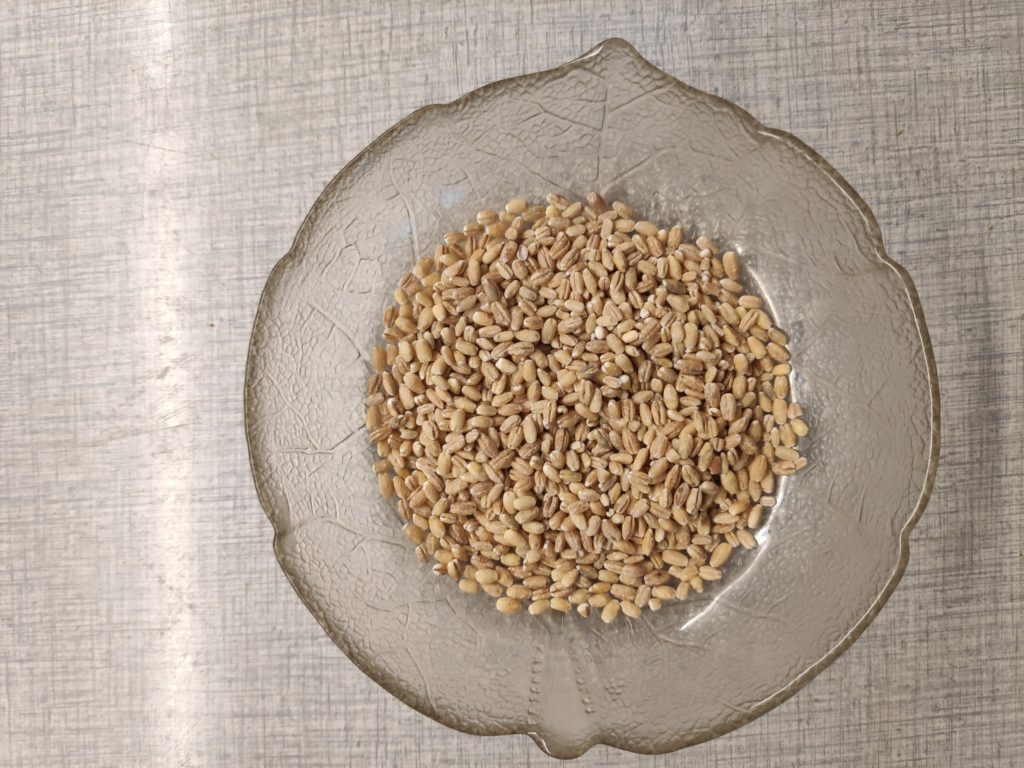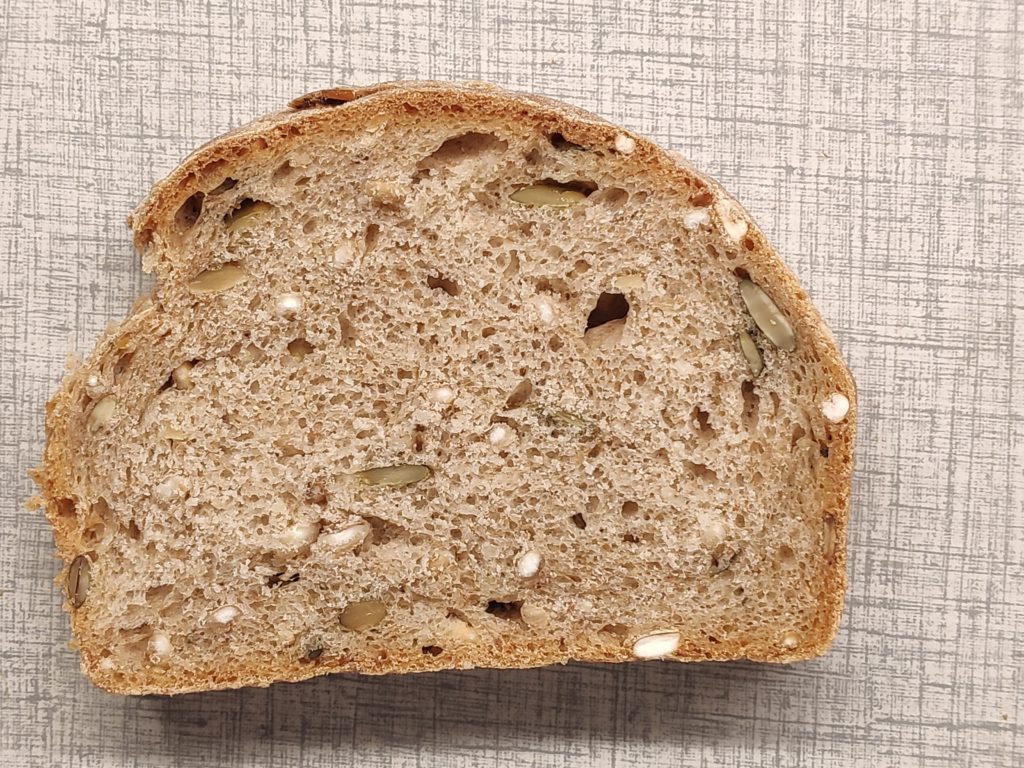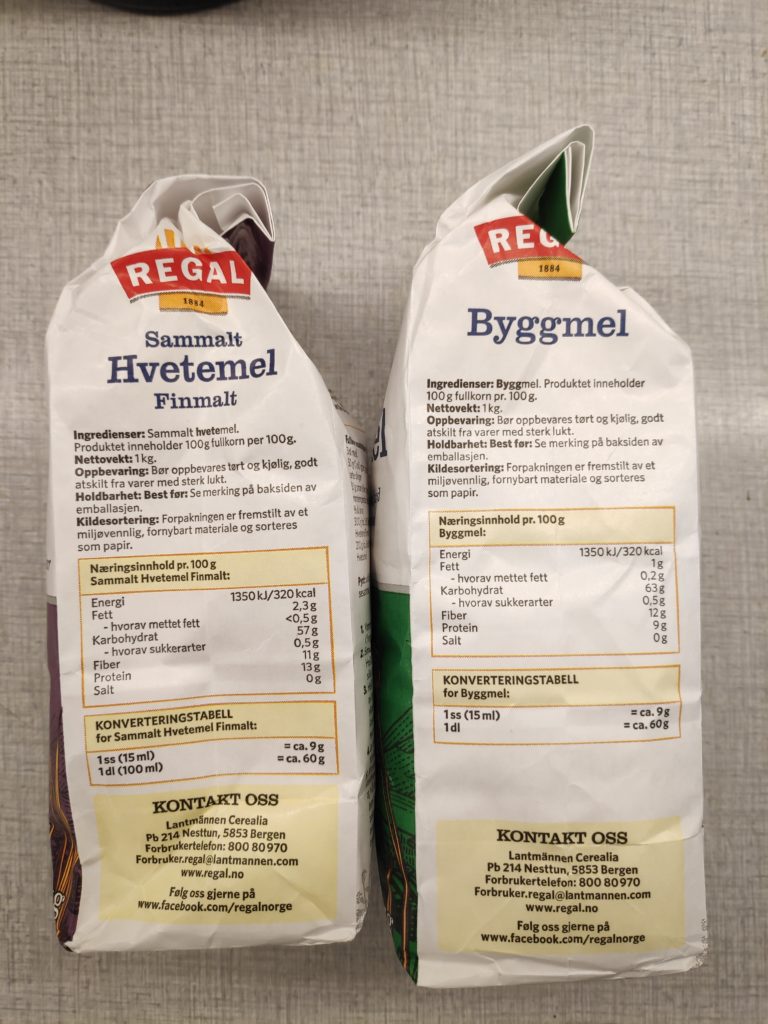After watching a Norwegian television series, I have decided to use more barley in our diet. Barley is grown in Norway and is actually more suitable to the Norwegian climate than wheat. Wheat can be grown in Norway, but it will vary from year to year how self-sufficient Norway is, depending on the summer weather. Some years Norway can provide 75% of the wheat it needs, and other years perhaps only 20%. So by using barley instead of wheat I can use a grain grown in Norway.
At my local food store I can buy either whole barley grains or whole-grain barley flour. I have been using both in our meals this last week.

Whole barley grains need to be soaked before using, so that one needs to plan the use of them ahead of time. We usually have a turkey at Christmas time, a childhood tradition for me. The day after turkey day, I like to make turkey soup, boiling the turkey bones to make a rich turkey stock and then adding grains and vegetables to make a hearty soup. This year I bought barley and added it to the soup and it was delicious!
Barley can also be used as a substitute for rice, which is an imported food in Norway. I have used it in various dishes and enjoy the taste of it. It is slightly crunchier than rice and takes about the same length of time to cook as brown rice though it needs to be soaked ahead of time. Use cooked whole grain barley in vegetable dishes to provide the carbohydrates needed to make one feel full and give the energy one needs to do things. It is very good in soups and stews.
On the package of the barley grains, there was a recipe for using barley grains in bread, so I tried that this week. The grains as well as some barley flour were first soaked for an hour. Then the rest of the ingredients were added. This means that the barley grains were not cooked before being added to the bread dough. The recipe also called for pumpkin seeds, so it was a very crunchy bread.

If we look at the nutritional content of barley flour and compare it with whole wheat flour there isn’t a lot of difference. They both have the same amount of energy, 1350 kj / 320 kcal. Wheat flour has more fat in it, at 2.3 gr while barley flour has only 1 gr. However wheat flour has less carbohydrates at 57 gr as versus barley flour at 63 gr. Barley flour has more fiber at 12 gr than wheat flour at 11 gr. Wheat flour has more protein at 13 gr while barley flour has only 9 gr. Whole grain barley has slightly more fat (3 gr), less fiber (8 gr) and less protein (8 gr)

I use whole wheat flour when making pancakes or waffles, which we have regularly once a week for breakfast. This week I substituted barley flour for some of the wheat flour to see what the taste difference is. I actually liked both the pancakes and the waffles with the barley flour. They were a bit more substantial than the regular ones that I make with only whole wheat flour. I think this is something that I will continue to use.
Barley flour will not rise like wheat flour, so though one can substitute some of the wheat flour, one cannot use only barley flour in bread that is meant to rise. It can, however, be used in flat breads or crispbreads, though I haven’t tried it yet.
The micro-nutrients found in barley can be important in a vegetarian diet. (Source: https://en.wikipedia.org/wiki/Barley#Nutrition) Barley is a good source of:
- calcium
- iron
- vitamin B6
- niacin (B3)
- manganese
- magnesium
- potassium
- phosphorus
- zinc
Much of the barley produced is used in making alcoholic beverages such as beer and whisky. As I do not consume alcoholic beverages I will not go into this use of barley. Barley is also used as animal feed.
I recommend using more barley in your diet as it is nutritious and tasty.
